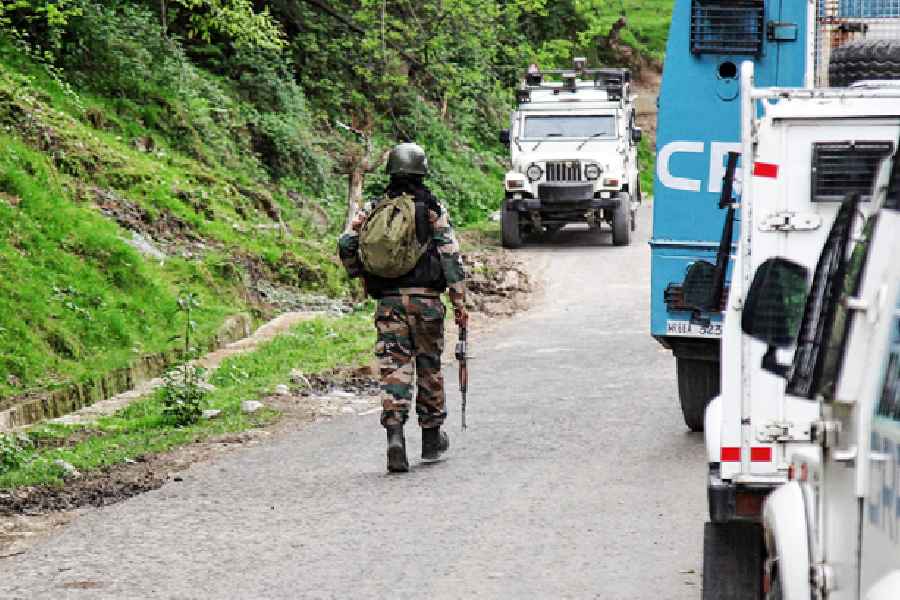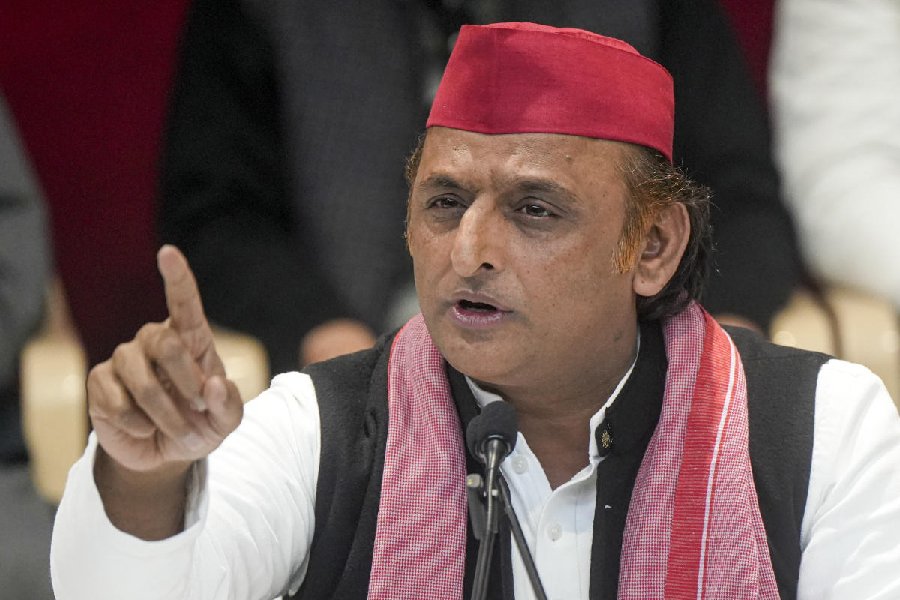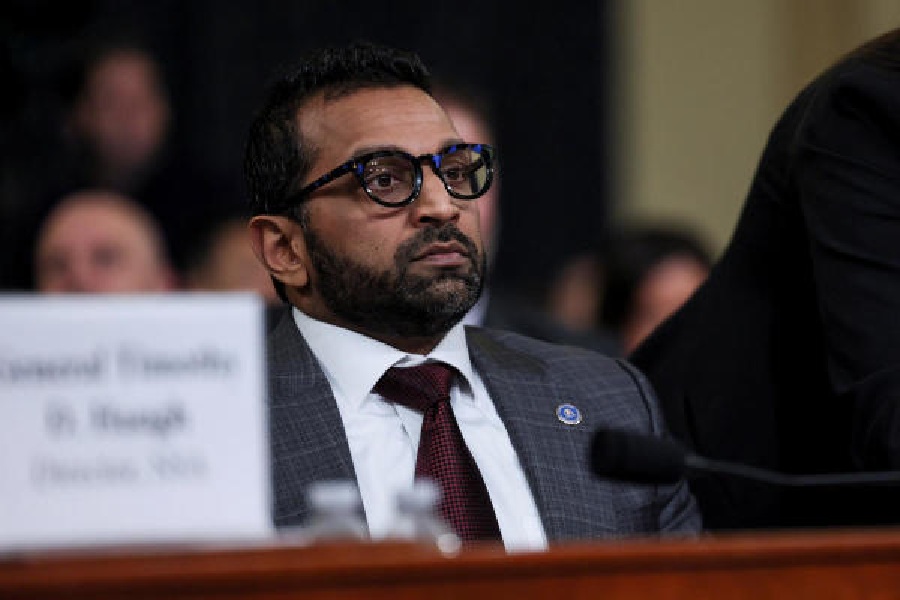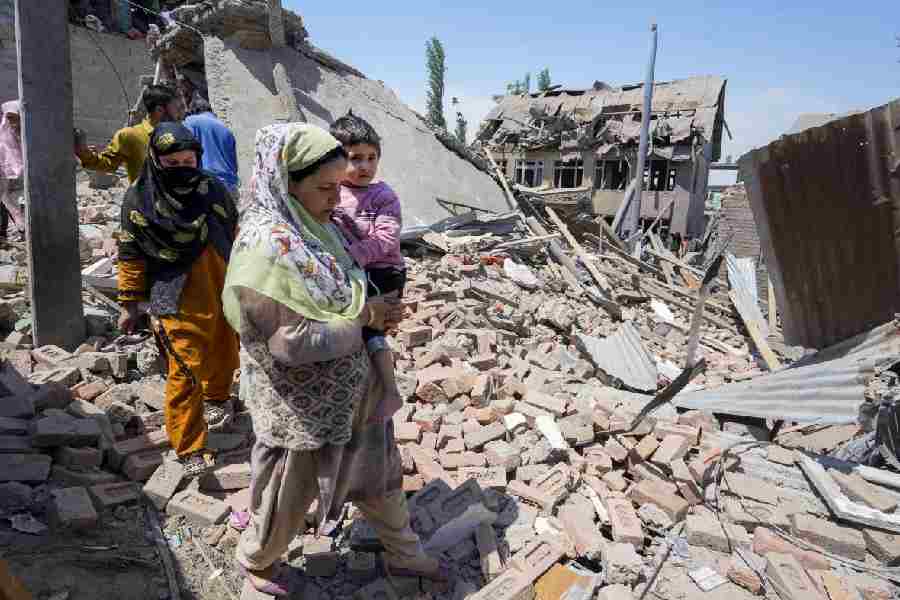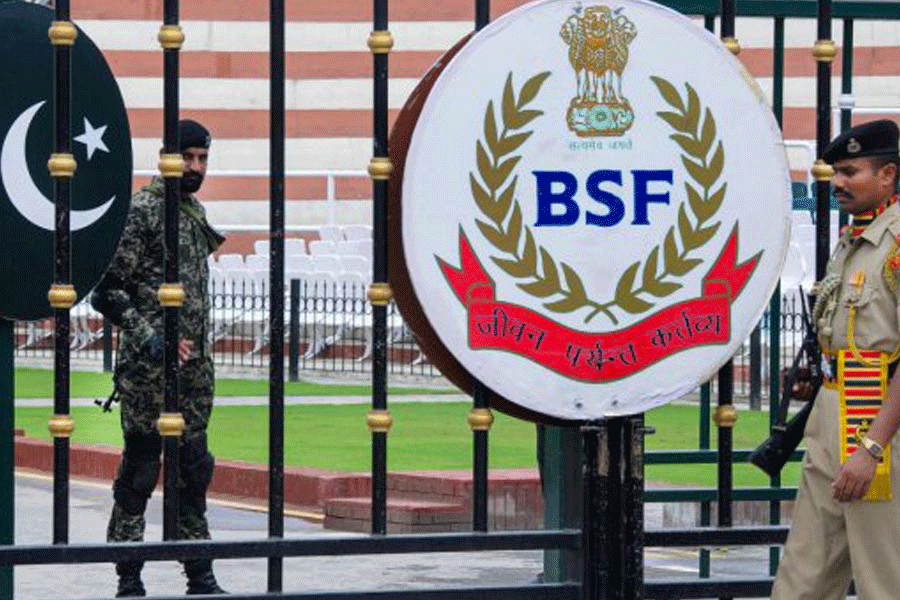 |
Muse or market, which should be served? This dilemma bothers not just the struggling artist, but anybody caught between true calling and career compromise. The choice for the artist isn’t easy, though sitting in judgment on him is. Hence, pleasing images that sell as décor offer the soft option that he picks in order to survive. Which is not so much a comment on such artists or on their art as on the kind of taste society — even its elite — is partial to and the priorities it lives by.
This was the thought that the recent show of about 19 or so artists at Idiyas Gallery primarily threw up. A few seniors were represented along with younger and even rather obscure names whose unquestionable craft is, at times, wasted on pictures of sucrose religio-romanticism. But if a respected veteran like Suhas Roy produces canvas after canvas of feminine portraits — perhaps titled She or maybe Radha, one of which was at this show — young artists might not always mull the hard option too much. A small work by Ramananda Bandyopadhyay, a sunset landscape by Prakash Karmakar, marked by his typical spiky lines and fiery colours, and another landscape that, surprisingly, bore the signature of Kartik Pyne were also there.
Among the younger artists, there was Shyamal Mukherjee with two reverse paintings, narrow and vertical. The comical distortion of the figures and the rich glow of colours boasted of his unmistakable stamp. A small work by Atin Basak was predictably dark and cunningly textured, but much of that was lost due to its poor positioning in a cluttered space. Few can achieve the brushwork of Sanatan Dinda, a flag-bearer of the Bikash Bhattacharjee school of photorealism. But so easily do illusory effects emerge from his skill that it has held him back from venturing into untried territory. Of his three works here, a thoughtful Buddha face caught the eye. And Shubhamita Dinda’s woman with a pitcher, clearly recalling Hemen Majumdar, made cinematic use of darkness and sensuous highlights.
But compensation came from a little-known artist, Sibsaday Chaudhuri, whose landscapes (picture), though quite obviously following the example of Prakash Karmakar, compelled attention. Impasto ridges, emphatic outlines and short, quick, bristly daubs of acrylic contributed to their heaving vigour. Another participant, Dilip Chaudhuri, was noticeable for his palette — black, white, greys with sudden dashes of red — and the summary smudges of paint that evoked scenes of night hinting at decadence. While Sambhu Saha’s impressionistic landscape in oil made persuasive use of receding space, Chandrima Roy’s depiction of a woman spoke of a feminine accent. And Samir Paul’s series on the Varanasi ghats affirms an enduring interest in the subject for artists and, possibly, for buyers too.





